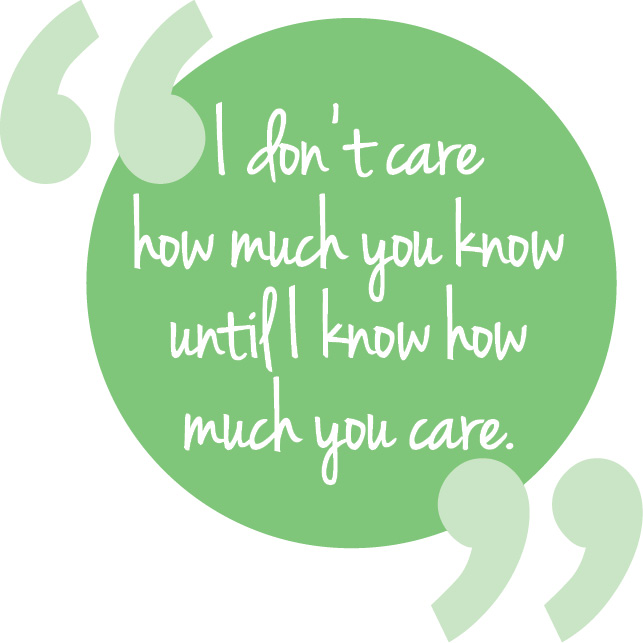

Monday, April 14, 2025
We all experience stress from time to time, and many of us share similar symptoms when we are stressed. Some of these shared symptoms, according to the Cleveland Clinic, are physical, emotional, and mental. They include exhaustion, headaches, high blood pressure, digestive problems, chest pain, muscle tension, a weakened immune system, anxiety, irritability, depression, panic attacks, and sadness.
But how do these symptoms show up according to your Shape? In this post, I will focus on the Circle.
Whether you identify with the Circle, or know someone who is a primary Circle, here are some things to know.
The Circle is an inward Shape that tends to hide their stress behind their smile, while still managing to take the time to be friendly, even when they are pressed for time. Like the Box that holds their stress within, the Circle is also a “Type B” personality. This is very important to recognize, because even when the Circle is highly stressed, they (along with the Box) are the least likely to show it on the surface. The Circle under stress tends to “put on a happy face” and just deal with it, not wanting to cause anyone to worry about them. However, under extreme stress that can't be easily masked, there are clues, as listed below.

How to Identify the Circle Under Stress
1. Short-tempered. The Circle is typically patient and rarely abrupt with people. When this happens, you know something is wrong.
2. Sullen/quiet. This is unusual for the talkative Circle or the Circle who enjoys listening attentively to others while they talk. Remember, the Circle wants to be seen as “happy” and interested in others.
3. Poor listener. Active listening is one of the Circle’s strong traits. When the Circle seems distracted in conversation, this is a warning sign.
4. Withdrawal from people. People and relationships are the “life blood” of the Circle, so when the Circle withdraws, go check on them. Ask if they want to talk or get a cup of coffee together.
5. Preoccupied with self. Since Circles place more emphasis on others than they do themselves, this indicates a problem. Circles rarely monopolize conversations with information about themselves.
6. Cancels social events. The Circle does not typically like to miss a party. Even if they are exhausted, the Circle cares too much about disappointing others rather than taking a “rain check.” If you notice a pattern of the Circle canceling plans, there could be an issue.
7. Closed door. The Circle’s doors are typically open, welcoming visitors and people to just stop by. This is an indicator of withdrawal.
8. Asks for help taking care of a child, sick family member, or aging parent. The Circle doesn’t mind being the one to volunteer to help, even if it’s driving an aging parent to the doctor, cutting their sick neighbor’s grass, or bringing dessert to the family get-together. But when the Circle asks for help in situations like these, they are overwhelmed, exhausted, and stretched beyond what is humanly possible. If they could, they would find a way to do it, instead of asking you to help.
Circles feel most comfortable and least stressed when:
1. The “waters are smooth” at home and at work.
2. The Circle is the center of a loving, happy family.
3. There are many close friends and/or relatives.
4. Leaders are fair and responsive to everyone.
5. They are doing something to help better someone else’s life.
6. It’s the “Holiday” season, and there are lots of gifts and happiness for all.
7. All the family is coming home for the holidays.
8. Everyone is happy, and everyone is happy with them.
Summary: If you are a Circle, try to be more aware of the early warning signs that accompany stress. Remind yourself that if you really want to help people, you must first help yourself, or at least protect yourself, from burning out. Instead of allowing your Circle to keep saying “yes,” leverage your Circle as to why you sometimes have to say no. For example, if someone continues to come to you for help, instead of learning how to do it themselves, you may be hurting them, not helping them. As hard as it is for the Circle to let others struggle, sometimes the Circle must say, “I care too much about you and your future success to keep doing this for you. Let me help you learn how, so you can do it yourself.”
Note: Circles place the greatest emphasis on relationships with people. Unlike the Squiggle, who just wants to entertain, motivate, or energize people, the Circle wants to listen, help, and support people. As for the difference between the Circle and Triangle, or Circle and Box, the Triangle wants to lead people, and the Box wants to provide accurate data so people can make informed decisions. Being naturally in tune with others and able to “read the emotions” in the room, the Circle carries a lot of stress if others are not happy or there is unresolved conflict between people.
The Circle needs to be reminded that to be their best self for others, they have to first take care of their own self.
If you want to learn more about other PsychoGeometrics resources, including our online DIY modules, upcoming certification online classes, or how we can customize a team-building workshop for your group, feel free to reach out to me directly. Our team truly loves helping people leverage their Shapes for effective and influential communication!
Susan Hite, CEO, PsychoGeometrics, The Science of Behavior - The Art of Communication
susanhite@psychogeometrics.com